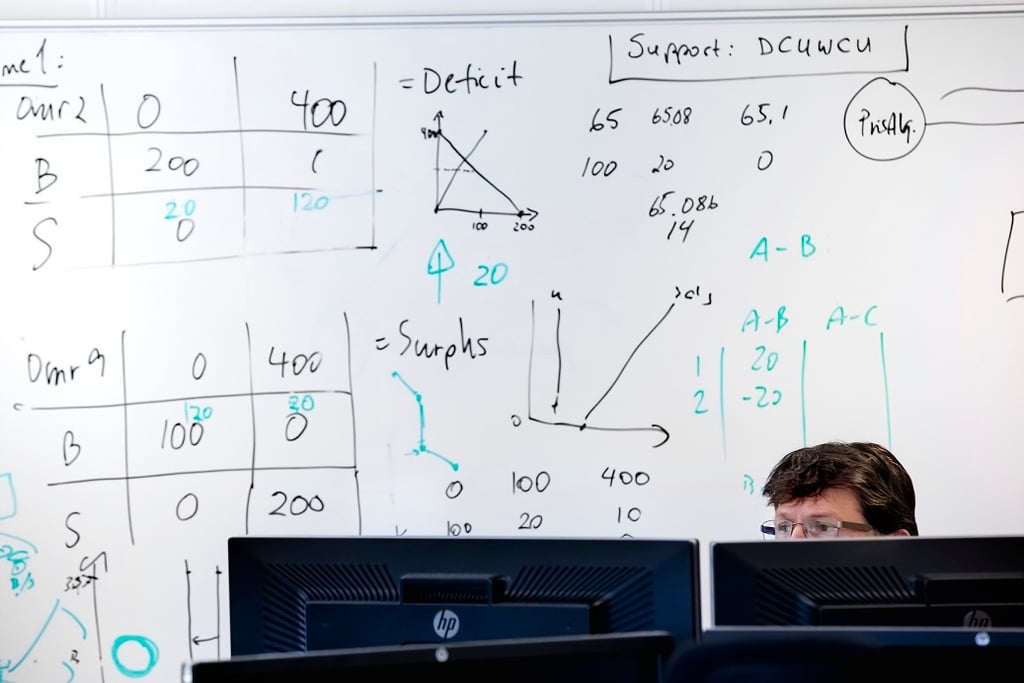In my previous blog post I argued why there is an increasing need for demand side flexibility in electricity markets. Despite the availability of technological solutions, this type of resources is not currently utilized. To exploit a greater part of the potential, we need to introduce stronger incentives that motivate end-users to participate. Economic incentives must represent possibility to reduce electricity costs or even to earn money. The crucial question is how can we do this?
In current Norwegian regime, each end-user needs to enter two types of electricity contracts: one with the local grid company (the so-called grid tariff) and one with a freely chosen power supplier. A prerequisite for integrating flexibility incentives into these contracts is that it is possible to meter down to hourly time resolution. For larger buildings (with annual consumption greater than 100.000 kWh) this is already fulfilled. For residential end-users, this will be in place when smart meters are installed (by 2019).
One obvious approach is to introduce hourly pricing at the power contract, where the price follows price variations in the wholesale market, for instance the Elspot market at Nord Pool Spot. There are two problems with this approach: First, the price variations during the day are currently small in Norway, meaning that the cost reduction potential is small. The question is of course whether the price variations in the future will increase with more dynamic load, more uncontrollable generation and closer link between the Norwegian and continental power systems. We then may see price variations like in Germany or Denmark, which are substantially greater than in Norway. Next, the question is whether the Elspot price is the right proxy for the valuation of flexibility. If the flexibility is meant to solve local challenges in the distribution grid, the Elspot price is definitively not the right signal.
A more relevant approach can then be to change the way the grid contracts are designed. Currently, the large buildings have a contract structure that includes a demand charge, where the basis is the maximum metered hourly out-take over a period, for instance a month. The demand charge is an incentive to reduce the peak load in each building. With hourly metering for all types of buildings, such a contract structure may be implemented for all end-users. An alternative to demand charge is the progressive power tariff, where the marginal price increases with increasing quantity. Subscribed power is an example of a progressive power tariff, which has been tested at Smart Energy Hvaler and Demo Steinkjer. Here, the end-user subscribes a power level (kWh/h), and every kWh below this power level is invoiced to a low price, while each kWh above this level is invoiced to a substantially higher price. These price models provide incentives to each end-user to flatten their own load profile. Another contract type is the time-of-use contract, where the prices are different at different times of the day, for instance higher during the morning and afternoon peaks, where the peaks in the distribution grid normally occur. One disadvantage with these approaches is that they create sub-optimality, since the end-users will adapt according to the price signals, even in situations where there is no problem in the grid. Another disadvantage is that they may adapt to the price signals, but not for the periods where there is a real problem in the grid. In general such models do not reflect the real situation in the grid. One way of avoiding such disadvantages is to introduce a contract type where the grid company announces high prices in advance of an expected problem. Such a dynamic grid tariff has been in operation in France for a long time through the Tempo-tariff system.
However, all the contract types described above have one common disadvantage: They do not give any guarantee at what level the end-users will respond. Therefore, in worst case, the total response may be smaller than the total needed volume, and we get a black-out. This issue may be solved if we introduce direct control of appliances, meaning automatic disconnection of loads like water heaters and floor heating. A crucial question is how this should be organised and what entity should be responsible for the disconnection process. One alternative is that the grid company itself performs the disconnections, another is that service company does this.
If such a service company is in place with access to flexibility from multiple end-users, we can take this one step further and introduce the concept of flexibility aggregation. Then we denote the service company aggregator. By such a process, even small amounts of flexibility can sum up to large volumes. To solve the grid company’s problems, the aggregator may offer the service to the grid company to decrease the load when needed. This can be regulated through a tailor-made service contract between the grid company and the aggregator. Such a contract can consist of a reservation fee (for the volume reserved), a fee for each activation and potentially a penalty fee if the volume called upon is not delivered. The aggregator must enter contracts with the participating end-users. Note that the end-users now turn from being consumers of electricity (as a commodity) to being suppliers of flexibility (as a service), which means that the value chain is reversed.
All alternatives above describe how the local grid challenges can be solved by a contractual framework. Establishing a local market place may be a different approach, and this will be the topic of my next blog post.
Finally, I want to mention a follow-up issue for the aggregator: When an aggregator is in operation and has collected a large amount of end-user flexibility, will there exist other business opportunities for these resources? An option is to sell them at the market places for ancillary services (like regulating power and primary reserves) operated by the transmission system operators (TSOs). Another business opportunity might be if there exist other players in the market that are willing to pay for flexibility. A wind power producer might be such an entity, in situations where imbalances are heavily penalized. With several business opportunities for the flexibility, the aggregator will be a portfolio manager on behalf of the end-users, aiming at maximizing the value creation from available flexibility.
To conclude, we see that several options exist for introducing incentives for demand side flexibility. The alternatives span from quite simple grid tariffs to more complex and tailor-made contracts involving new entities in the electricity market.




.png?width=250&height=64&name=Grid%20Vision%20logo(250%20x%2064%20px).png)